
Concept explainers
(a)
To estimate: The volume of configurations by plotting several diagrams of the open top box with different bases and height.
(a)
Answer to Problem 10E
The maximum volume is
Explanation of Solution
Given: The width of the cardboard
To draw:
Several diagrams illustrating the situation with different bases and height of the open top box.
Case 1: Draw an open top box with base length 1 ft and width 1 ft and height 1 ft.
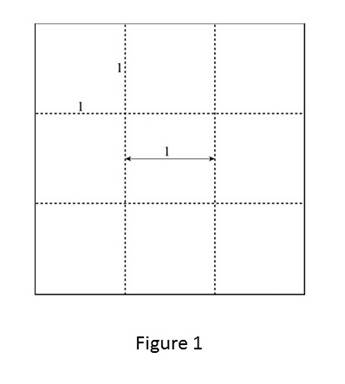
In the Figure 1,
The width of the cardboard is
The volume of the open top box is 1
Case 2: Draw an open top box with base length

In the Figure 2,
The width of the cardboard is
The volume of the open top box is
Case 3: Draw an open top box with base length 2 ft and width 2 ft and height
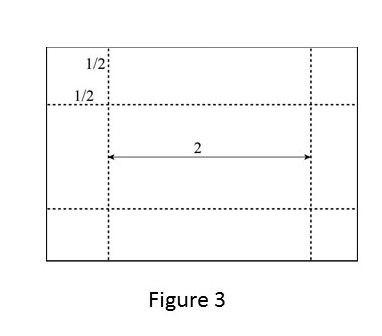
In the Figure 2,
The width of the cardboard is
The volume of the open top box is
By comparing, it is clear that, among all the 3 cases, the maximum volume is
(b)
To draw: The diagram illustrating the general solution for the open top box with different bases and height.
(b)
Explanation of Solution
Given:
A box with an open top is to be constructed from a square piece of cardboard, 3 ft wide, by cutting out a square from each of the four corners and bending up the sides.
Draw an open top box with length y and width y and height x.
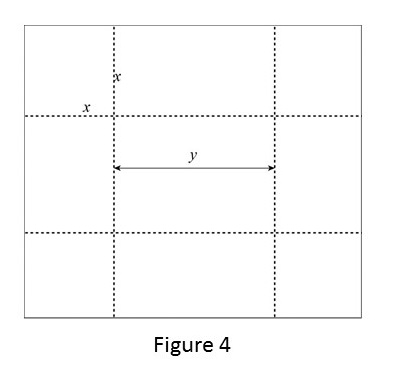
In Figure 4,
The width of the cardboard is
(c)
To find: the volume of the box with length y and width y and height x.
(c)
Answer to Problem 10E
The volume of the open top box is
Explanation of Solution
Volume
The volume of the open top box is
(d)
To find: The equation of the width of the cardboard.
(d)
Answer to Problem 10E
The equation is
Explanation of Solution
Given:
The cardboard is 3 ft wide.
Length of cardboard
Calculation:
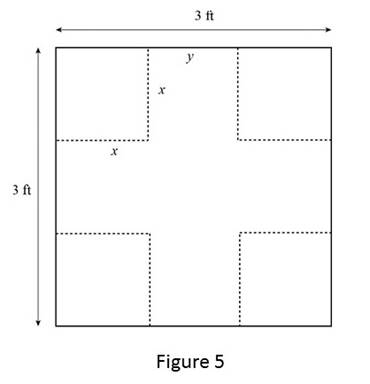
In Figure 5,
The relatable equation is
(e)
To find: The volume of the open top box in one variable.
(e)
Answer to Problem 10E
The volume is
Explanation of Solution
Given:
The volume of the open top box is
Calculation:
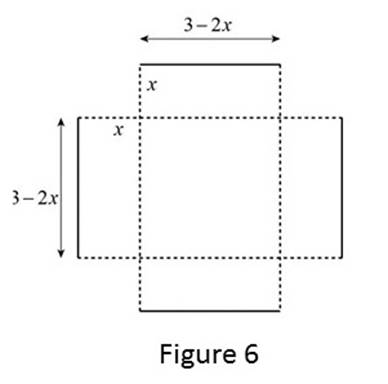
In Figure 6,
Substitute the value of
Thus, the volume is
(f)
To solve: The problem using calculus and to compare the answer with the estimated volume
(f)
Answer to Problem 10E
The maximum volume is
Explanation of Solution
Given:
The volume is
Calculation:
Differentiate with respect to
For critical points,
Either
Differentiate
Substitute the value of
Substitute the value of
Substitute
The calculated volume is equal to the estimated volume
Thus, the maximum volume is
Chapter 4 Solutions
Single Variable Calculus: Concepts and Contexts, Enhanced Edition
 Calculus: Early TranscendentalsCalculusISBN:9781285741550Author:James StewartPublisher:Cengage Learning
Calculus: Early TranscendentalsCalculusISBN:9781285741550Author:James StewartPublisher:Cengage Learning Thomas' Calculus (14th Edition)CalculusISBN:9780134438986Author:Joel R. Hass, Christopher E. Heil, Maurice D. WeirPublisher:PEARSON
Thomas' Calculus (14th Edition)CalculusISBN:9780134438986Author:Joel R. Hass, Christopher E. Heil, Maurice D. WeirPublisher:PEARSON Calculus: Early Transcendentals (3rd Edition)CalculusISBN:9780134763644Author:William L. Briggs, Lyle Cochran, Bernard Gillett, Eric SchulzPublisher:PEARSON
Calculus: Early Transcendentals (3rd Edition)CalculusISBN:9780134763644Author:William L. Briggs, Lyle Cochran, Bernard Gillett, Eric SchulzPublisher:PEARSON Calculus: Early TranscendentalsCalculusISBN:9781319050740Author:Jon Rogawski, Colin Adams, Robert FranzosaPublisher:W. H. Freeman
Calculus: Early TranscendentalsCalculusISBN:9781319050740Author:Jon Rogawski, Colin Adams, Robert FranzosaPublisher:W. H. Freeman
 Calculus: Early Transcendental FunctionsCalculusISBN:9781337552516Author:Ron Larson, Bruce H. EdwardsPublisher:Cengage Learning
Calculus: Early Transcendental FunctionsCalculusISBN:9781337552516Author:Ron Larson, Bruce H. EdwardsPublisher:Cengage Learning





